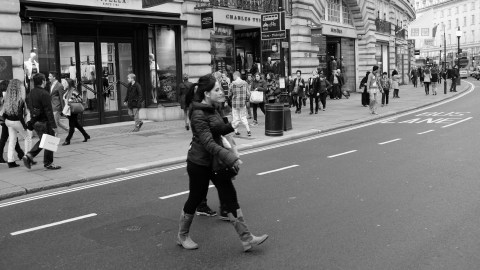Rewards (Not Fines) May Help Reduce Speeding

Instead of receiving a fine for driving over the speed limit, what if you received $10 for driving under it? Would a reward for good behavior give you enough incentive to let up on the led foot? Better yet, how long would people acknowledge that incentive?
Daniel Pink, TV host and author of several books on human behavior, has some interesting answers. Tom Jacobs of the Pacific Standard writes on Pink’s new TV series called Crowd Control, particularly, the show’s opener covering “lawbreakers”–you know, jaywalkers, speeders, people who park in handicap spaces. These people (let’s be honest, all of us) break minor laws and fines don’t deter them in the slightest.
Pink uses out-of-the-box thinking in his series to assess these problems and reduce offenses. In the case of speeders, he sets up flashing signs, telling motorists they’ll be entered to win a cash prize of $100 if they drive the speed limit. The number of cars racing along the roadway was reduced by one-third.
In another case, Pink turns his attention to busy crosswalks and jaywalkers. They pose a threat to motorists and themselves by crossing when it’s not their turn. But Pink gets to the root of the cause of jaywalking: boredom. In this case, he uses shock signs and games to occupy pedestrians while they wait. One intersection states, “Be late, not dead. Don’t jaywalk.” The other has an electronic game to entertain walkers while they wait. Pink was proud to report that the amount of jaywalkers dropped from 20 per hour to two per hour.
Smart Company recently tested out a traffic light solution to help reduce jaywalking in one of Lisbon, Portugal’s busy intersections. Their answer: put up a dancing traffic light. It grabbed pedestrians’ attentions enough to reduced red-light crossings by 81 percent.
Pink continued on his journey to find a way to deter people from parking illegally in handicap spaces. He installed pictures of wheelchair-bound people in handicap parking spaces at a local bank. The result: driver after driver, pulled into the spaces, momentarily considering the sign, and then pulled out.
“After a month of observation, we haven’t seen anyone parking illegally (in these spaces).”
The true test of these innovations will be whether people continue to notice these cash incentives and attention-grabbing ploys, or if they’ll fade into the back of peoples’ minds, like fines, and become ignorable incentives. Jacobs makes a great point that a follow-up episode would add great value to the legitimacy of these solutions.
Read more at Pacific Standard
Photo Credit: Trevor Cummings/Flickr





